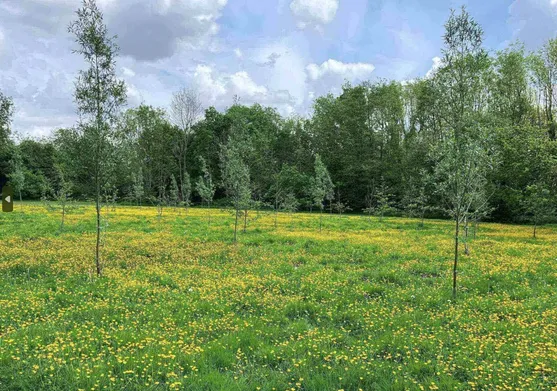News
Welcome to our News Page. Read on for updates on what the Energy and Sustainability Team has been up to!
No Mow May 2025
For the sixth year running the University will be taking part in Plantlife’s No Mow May Movement and leaving areas of grass to grow. These areas will be allowed to grow throughout May, with some areas being left throughout the summer months and only being cut at the end of the season. This will allow seeds to set and species diversity to flourish in the future, which in turn help a whole host of pollinators and provide shelter for small mammals.
The main areas to be left unmown to provide a buffet for pollinators will be around the residences, lakesides and woodland areas with a strip being mown along the edge so people can see that the area is being managed. In addition to areas of no mow there are also areas of wildflower seeding across campus including at Windmill Hill, Gibbet Hill, Sherbourne, and Westwood. Elsewhere the Grounds and Gardens Team have used wildflower turf to provide instant visual appeal and biodiversity benefits in high footfall locations and along road verges.
There are a number of locations on campus where orchid rosettes have been spotted and we hope that our reduced mowing regime will provide the conditions for these beautiful plants to thrive. As many of the daffodils and other spring flowering bulbs are fading, why not take a break from studies and work to explore campus on the lookout for the first signs of wildflowers and pollinating insects.

We encourage staff, students and the wider community to record sightings of flora and fauna on campus using the iNaturalist app. Take a photo and iNaturalist will identify the species for you. This is a great opportunity for you to learn about our campus environment, while also helping us to understand more about what species are present and where, which we can then use to guide habitat management. In addition, iNaturalist data can contribute to biodiversity science as findings are shared with data repositories to help scientists with their research.
Did you know that since the 1930s, the UK has lost approximately 97% of flower rich meadows and has lost more than 7 million acres of flower-rich meadows and pastures and that now only 1% of our countryside provides a floral feast for pollinators? Against this loss, with over 20 million gardens in Britain, our lawns have the potential to become major sources of nectar? If you’re interested in playing your part, leave your lawn to wildlife this May!
To find out more about biodiversity on campus contact the Energy and Sustainability Team at sustainability@warwick.ac.uk.
Share Your StoryLink opens in a new window
Write for our blog or news page and get your story published.
Stay Connected
Follow us on LinkedIn, Facebook and Instagram for the latest updates on our environmental sustainability initiatives.
Become a StaffLink opens in a new window or StudentLink opens in a new window Green Champion to receive our monthly newsletters
Get involved in sustainability initiatives, raise awareness and identify opportunities to create a more sustainable campus.
